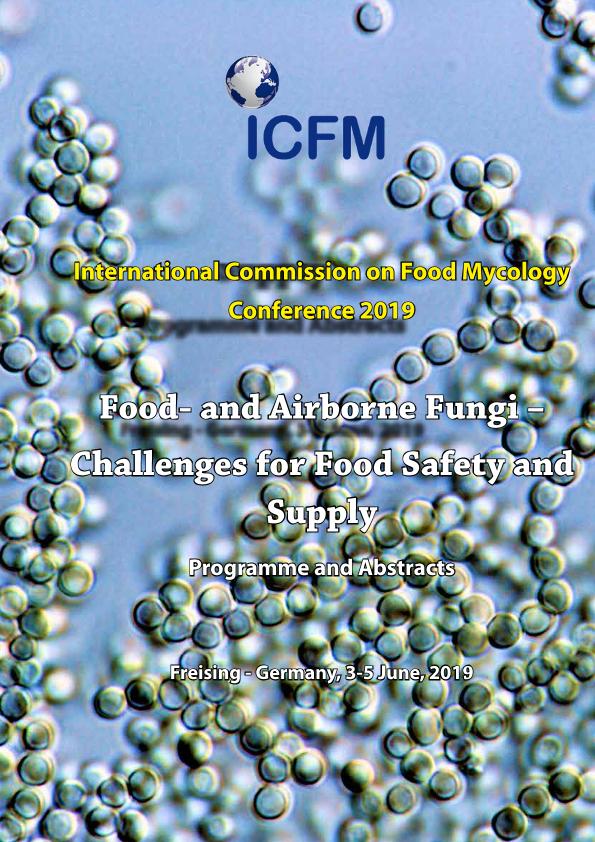Evento
Mycobiota and mycotoxin occurrence in chickpea produced in Argentina
Tipo del evento:
Conferencia
Nombre del evento:
International Commission on Food Mycology Conference
Fecha del evento:
03/06/2019
Institución Organizadora:
International Commission on Food Mycology;
Título del Libro:
International Commission on Food Mycology Conference 2019: Food- and Airborne Fungi Challenges for Food Safety and Supply
Editorial:
International Commission on Food Mycology
Idioma:
Inglés
Clasificación temática:
Resumen
Chickpea (Cicer arietinum) is one of the most cultivated pulses in terms of world production. There is a high demand of this legume due to its nutritional value. Although it is more popular in developing countries, it is becoming recognized throughout the world. Chickpea is often attacked by fungi during pre and post-harvest stages, significantly affecting its productivity. Also some species can be potential mycotoxin producers that can lead to serious threats to human health. Since there is an increasing demand for high quality and innocuous foods, limits for mycotoxin contamination have been established. The aims of this survey were to determinate mycobiota and mycotoxin contamination in chickpea seed samples harvested from different chickpea growing areas in Argentina during the 2018 harvest season. All samples showed contamination with at least one fungal genus. In general, infection levels ranged from 10 to 100%. The most prevalent fungal genera isolated were Aspergillus and Alternaria. Other fungal genera isolated in less frequency were: Penicillium, Chaetomium, Rhizopus and Fusarium. Mycotoxin contamination was analyzed in 10 chickpea samples by LC-MS/MS. Although Fusarium was not the predominant fungal genus isolated, most detected mycotoxins werethose produced by members of this genus. As a result, deoxynivalenol, zearalenone, beauvericin and alternariol monomethyl ether were detected in all samples, in levels ranging from 26.1 - 626.2 ng/g, 1.71 ? 227.1 ng/g, 7.5 ? 73.7 ng/g and 0.7 ? 14.5 ng/g, respectively. In 40% of analyzed samples, 3-acetyldeoxynivalenol was found in levels ranging from 12.7 - 50.744 ng/g. Alternariol was detected in 30% of samples in levels ranging from 1.4 - 2.3 ng/g. Only one sample was contaminated with fumonisins (16.4 ng/g and 15.3 ng/g for FB1 and FB2, respectively). Another sample was contaminated with 20.5 ng/g of 15- acetyldeoxynivalenol. The occurrence of Fusarium mycotoxins at harvest time could indicate that Fusarium contamination occurs under field conditions during grain development,when high water activity levels are observed.
Palabras clave:
MYCOTOXIN
,
MYCOBIOTA
,
CHICKPEA
Archivos asociados
Licencia
Identificadores
Colecciones
Eventos (IMICO)
Eventos de INSTITUTO DE INVESTIGACION EN MICOLOGIA Y MICOTOXICOLOGIA
Eventos de INSTITUTO DE INVESTIGACION EN MICOLOGIA Y MICOTOXICOLOGIA
Citación
Mycobiota and mycotoxin occurrence in chickpea produced in Argentina; International Commission on Food Mycology Conference; Freising; Alemania; 2019; 38-39
Compartir




